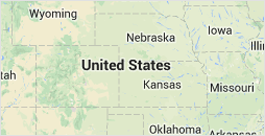Lee Wood
PHONE NUMBER : -------------
Map

Can Weed Assist With Nausea and Vomiting?
As of April 2017, only 10 human studies have examined the effects of inhaled marijuana on the treatment of chemotherapy-induced nausea and vomiting. This is according to the National Cancer Institute.
In some instances, cannabis consumed through inhaling was used since dronabinol did not help. One study found that inhaling marijuana was effective in patients that received high doses of methotrexate.
Most of the evidence comes from strains that contain certain levels of tetrahydrocannabinol (THC). Cannabis strains are specially bred to have different ratios/concentrations to produce specific pharmacological effects.
Cannabidiol is not addictive and has only been conducted in animal studies. However, several animal studies have shown it to be effective in nausea reduction.
Mice and rats do not vomit as a way to respond to toxins. This means that other species such as ferrets and cats should be tested. However, by examining the yawning caused by the reaction, it is possible to determine the degree of nausea in mice.
In a study in mice published in the British Journal of Pharmacology in 2012, cannabidiol was effective in treating nicotine-induced nausea.
Other animal studies have shown that low doses of cannabidiol are effective for many types of induced vomiting and pre-vomiting, but not for nausea and vomiting caused by motion sickness. Preliminary results indicate that cannabidiol activates neurotransmitters that reduce nausea.
More research is needed to determine the correct combinations, doses, and drug interactions for natural and synthetic cannabinoids used for chemotherapy-induced nausea and vomiting and other types of nausea. Both have been associated with nausea and vomiting due to chemotherapy at the receptor site.
Several of the body's cannabinoid terminal receptors are located in the gag reflex pathway, making them promising targets for the treatment of chemotherapy-induced nausea and vomiting.
The dorsal vagus nerve complex in the brainstem is the main regulator of vomiting (nausea / vomiting) and is responsible for the connection between blood signals (such as chemotherapy) and the nerve cells that induce vomiting.
When the 9-THC receptor is activated, both cannabinoid end receptors and both have an antiemetic response.
How Can Cannabinoids Work To Forestall Queasiness?
Nabilone and dronabinol work by impeding serotonin and dopamine, the two of which are related with CINV, at receptor locales.
The dorsal vagal complex (DVC) in the brainstem is the general controller of emesis (sickness/retching), and it is liable for correspondence between signals in the blood (like chemotherapy) and the nerve cells that start emesis.
If you are looking to alleviate symptoms of nausea, marijuana may be the right option for you. Check out your local weed store to find a strain that will best help your needs.
Author Bio:-
Lee Wood writes about CBD products and its benefits. You can find his thoughts at cannabis essentials blog. To learn more about weed delivery in Las Vegas, click here.
